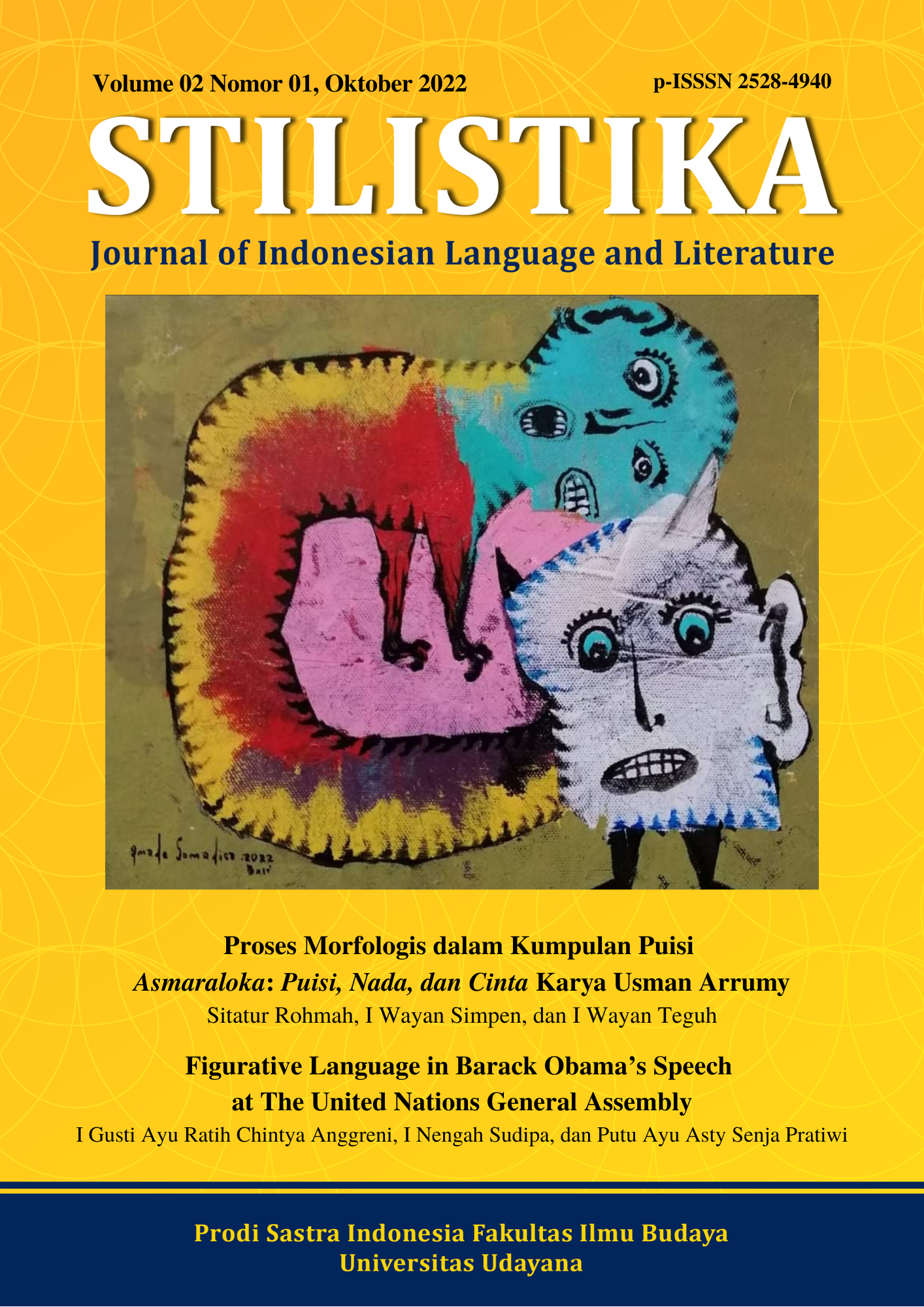Perubahan Kepribadian Tokoh Utama dalam Novel Catatan Juang Karya Fiersa Besari
Abstract
This thesis examines the changes in this personality of the main character in Fiersa Besari novel Catatan Juang, which tells the story of Suar struggle as the main character in achiecing his dream as filmmaker. In Suar journey to become a filmmaker, the various things he has gone through havemade him experience changes in his development period. This study analyzes the structure of the novel and the changes that occur to the main characte. To obtain the desire result, the theories used are Stantont Structural amda Hurlock develompent psychology. The method use to collect data is literature study with reading, listening, and note-taking techniques. Then to analyze the data used descriptive analytical method by describing the result of data analysis that has been done. Structural theory is use to analyze plot, characters, and setting. The flow analysis uses three stages, initial stages, middle, and final stages. So it was found if the groove used was a conventional flashback groove. Suar characterization as the main character, as a developing character. This cause changes in the nature and character of Suar to develop from beginning of its appearance to the end story. Then, the setting that dominates this novel is Jakarta, Bandung, North Village, and Karst Mountain. The time setting ranges from 2015 to 2016, other time setting are also visible such as morning, afternoon, evening, and night. Bacground the atmosphere that appears, among others, surrender, sad, happy. The personality changes that occur are Suar seccessful adjusment to adulthood, the achievements he shows and the satisfaction that Suar gets in his work, making him a pleasant person, tough, and unyielding.
Downloads
References
Bogdan, Robert dan Steven Taylor. 1992. Pengantar Metode Kualitatif. Surabaya: Usaha Nasional.
Damono, Sapardi Djoko. 1979. Sosiologi Sastra : Sebuah Pengantar Ringkas. Jakarta: Pusat Pembinaan dan Pengembangan Bahasa.
Hurlock, Elisabeth B. 2005. Psikologi Perkembangan. Cetakan Ke-5. Jakarta: Penerbit Erlangga.
Nurgiyantoro, Burhan. 2007. Teori Pengkajian Fiksi. Yogyakarta: Gadjah Mada University Press.
Pratama, Khoirul Imam Yoga. 2021. Konflik Batin Tokoh Utama dalam Novel Catatan Juang Karya Fiersa Besari sebagai Pembelajaran Analisis Pesan Buku Fiksi SMA Kelas IX. (Jurnal Repository Universitas Jendral Soedirman). Purwokerto: Universitas Jendral Soedirman.
Ratna, Nyoman Kutha. 2004. Teori, Metode, Dan Teknik Penelitian Sastra (Dari Strukturalisme Hingga Postrukturalisme, Perspektif Wacana Naratif). Yogyakarta: Pustaka Pelajar.
Rusyam, A. Tarbani. 1991. Kemampuan Dasar Guru dalam Proses Belajar Mengajar. Bandung: Remaja Rosdakarya.
Salim, M. Malik, Abdul. Elfitra, Legi. 2019. Kajian Kritik Sosial dalam Novel Catatan Juang Karya Fiersa Besari. Tanjung Pinang: Jurnal Penelitian Universitas Maritim Raja Ali Haji.
Santosa, Puji. 1996. Pengetahuan dan Apresiasi Sastra dalam Tanya-Jawab. Ende-Flores: Nusa Indah.
Stanton, Robert. 2007. Teori Fiksi. Yogyakarta: Pustaka Pelajar.
Sugiyono. 2016. Metode Penelitian Kualitatif dan Kuantitatif. Bandung: CV.Alfabeta.
Teeuw, A. 1984. Sastra dan Ilmu Sastra: Pengantar Teori Sastra. Jakarta: Dunia Pustaka Jaya.
Trisnawati, Yunita. 2019. Perlawanan Perempuan pada novel Catatan Juang Karya Fiersa Besari. (Jurnal penelitian Prodi Pendidikan Bahasa dan Sastra Indonesia FKIP, Malang). Malang: Universitas Muhammadiyah Malang.






